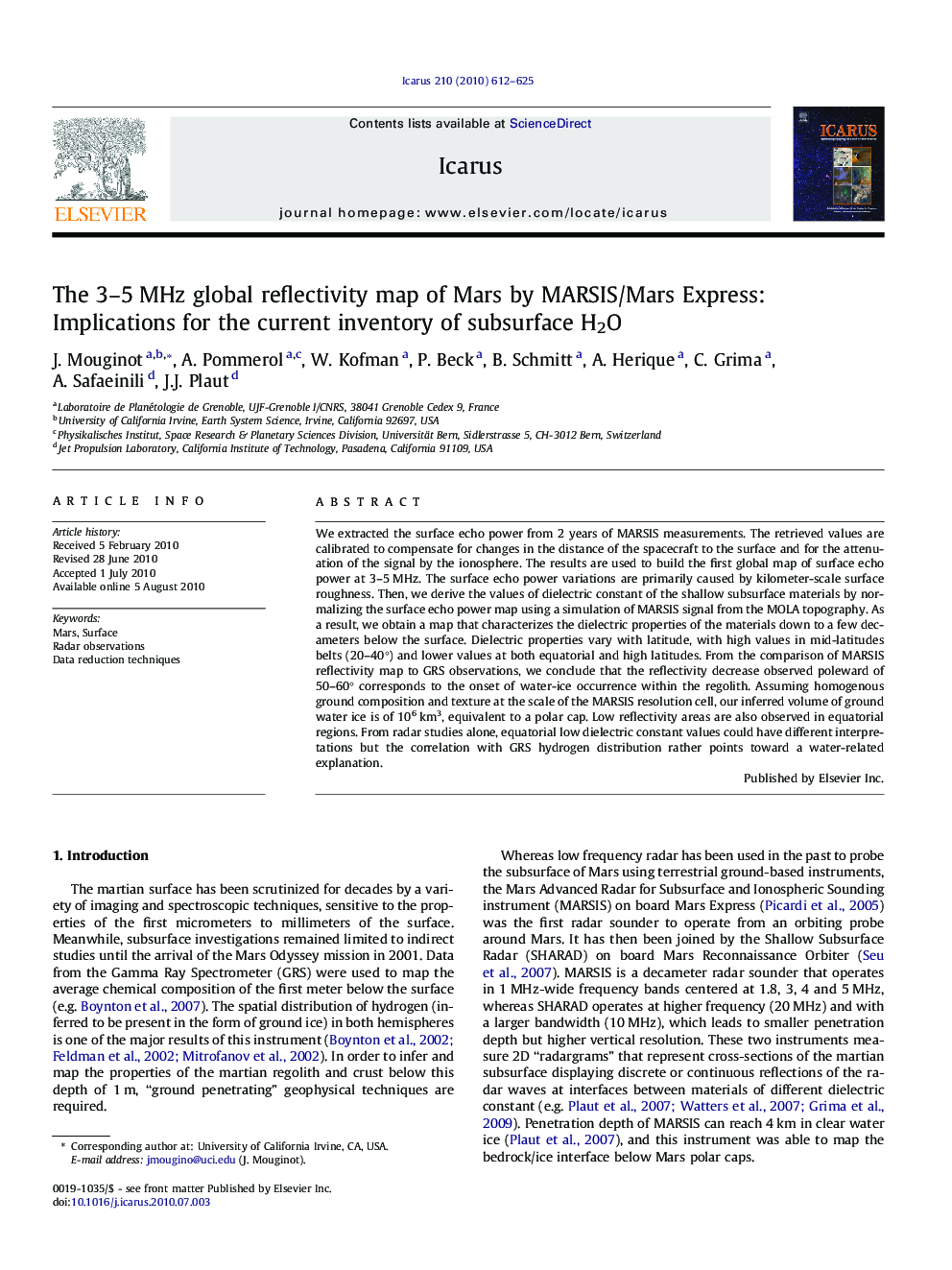| Article ID | Journal | Published Year | Pages | File Type |
|---|---|---|---|---|
| 1773613 | Icarus | 2010 | 14 Pages |
Abstract
We extracted the surface echo power from 2 years of MARSIS measurements. The retrieved values are calibrated to compensate for changes in the distance of the spacecraft to the surface and for the attenuation of the signal by the ionosphere. The results are used to build the first global map of surface echo power at 3-5 MHz. The surface echo power variations are primarily caused by kilometer-scale surface roughness. Then, we derive the values of dielectric constant of the shallow subsurface materials by normalizing the surface echo power map using a simulation of MARSIS signal from the MOLA topography. As a result, we obtain a map that characterizes the dielectric properties of the materials down to a few decameters below the surface. Dielectric properties vary with latitude, with high values in mid-latitudes belts (20-40°) and lower values at both equatorial and high latitudes. From the comparison of MARSIS reflectivity map to GRS observations, we conclude that the reflectivity decrease observed poleward of 50-60° corresponds to the onset of water-ice occurrence within the regolith. Assuming homogenous ground composition and texture at the scale of the MARSIS resolution cell, our inferred volume of ground water ice is of 106 km3, equivalent to a polar cap. Low reflectivity areas are also observed in equatorial regions. From radar studies alone, equatorial low dielectric constant values could have different interpretations but the correlation with GRS hydrogen distribution rather points toward a water-related explanation.
Related Topics
Physical Sciences and Engineering
Earth and Planetary Sciences
Space and Planetary Science
Authors
J. Mouginot, A. Pommerol, W. Kofman, P. Beck, B. Schmitt, A. Herique, C. Grima, A. Safaeinili, J.J. Plaut,
